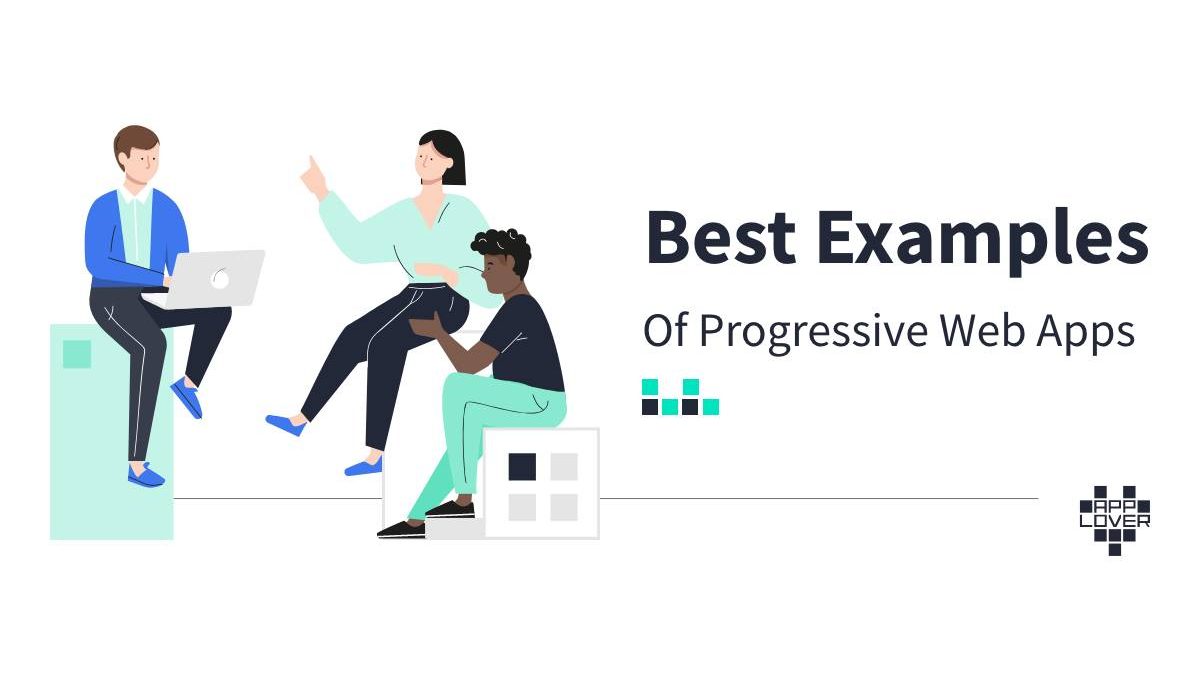Best Examples of Progressive Web Apps-Today, we frequently utilise mobile gadgets. Best Examples of Progressive Web Apps is Although you could already heard it years ago, PWAs will soon lead to a breakthrough in the mobile industry. This phrase might have caught your eye while browsing the internet. There is a good explanation for why it occurs. Using a PWA solution, you can boost your sales on desktop and mobile devices. This article covers the best use cases for progressive web apps in software development.
Table of Contents
What is a PWA solution?
On any platform, a progressive web application can be utilised both as a website and a mobile application. By using cutting-edge technology like push notifications, offline functionality, and welcome screens, it strives to close the gap between websites and mobile apps. PWAs combine the most excellent features of these two approaches.
It is built on HTML, CSS, and JavaScript and developed utilising web technologies. PWAs do not need to be distributed through app stores and are covered by iOS or Android regulations because they are web applications that function as websites. Web apps can be published online by developers. However, one of the criteria of the Progressive Web Application Checklist (established by Google Developers) is that users should be able to add an app to their home screen on a mobile device.
A Progressive Web App is what?
Instead of creating native apps, PWAs aim to develop cross-platform applications. A progressive web app should pass a fundamental criterion before going live. It satisfies prerequisites and aids in creating the optimum user experience. In conclusion, PWA seeks to:
- Fast load time
- Work offline
- Responsive web experience
- Cross-browser support
- Installable app-like experience
- Register a service worker
- Follow practices for healthy code.
Top 9 examples of progressive web applications
Leading companies have decided to create PWAs to improve user experience and increase conversion rates. In addition, this technology competes with numerous native app frameworks, and mobile web browsers effectively support it.

Uber
Uber completely overhauled its web client to design a web application with outstanding performance. App-like features are available in its PWA. No matter what device or connection speed, anyone can utilise it. Only 50 kB make up the app’s central portion. Due to its substantially smaller weight, the Uber web application can load in 3 seconds, even on a 2G connection. To mimic a native programme is what it meant to do.
Spotify
Nowhere, With 155 million premium customers globally as of the fourth quarter of 2020, Spotify. This music application uses anywhere, anytime, and on any device. Web technology has always been a part of Spotify’s operations. Built using HTML5 standards, the Web Player maintains the aesthetic of Spotify. It’s simple and fast in all key aspects.
The previous mobile web interface for Pinterest was a monolith. Its website redesign as a PWA resulted in numerous performance enhancements and higher conversion rates. On typical hardware, it loads more quickly. The development of Pinterest’s PWA has also resulted in a 60% rise in core engagement and a 44% increase in user revenue.
Trivago
The PWA approach made it possible for one of the top hotel search engines in the world to create an app without having to hire large software development teams. User engagement increased by 150% due to features including offline mode, home screen shortcuts, and push notifications. The click-through rate to hotel offers of 97% is also outstanding.
Forbes
Forbes magazine improved its browser-friendly application. As a result, the Forbes PWA reduced load times and enhanced mobile user experience. One of the signs was that they registered up to 43% more sessions per user.
Premade
Premade was created by the App lover team, even though it may not be the most well-known software on this list. Their main objective was to demonstrate the different business applications for their technology. The PWA solution creates using Vue.js and the Prismade JavaScript SDK, which considerably simplifies interfacing with the backend, where all the magic happens.
Lancome
The high-end cosmetics For the Lancome brand, mobile traffic exceeded desktop visitation. As a result, Lancôme turned to PWA technology to offer an immersive, app-like experience rather than sparingly updating their website. With PWA, Lancôme increased conversion rates by 17% and mobile sessions on iOS by 53%.
Telegram
Another excellent PWA is this instant messaging application. It’s a lightning-fast experience for consumers of mobile devices, with more than 100 million active users in 2.5 years. Additionally, it is open-source for all developers who want to create Telegram applications.
Starbucks
Starbucks offers a quick, effective, and simple PWA but has the look and feel of a native app. Customers can browse the menu, personalise their orders, and add items to their shopping carts using its PWA. Starbucks reports a 2x increase in their daily active users after the launch.
Conclusion:
Best Examples of Progressive Web Apps PWAs are the way to go; that much is obvious. Progressive web apps are becoming more popular, and many businesses that opted for this solution reported increased engagement and income after deploying them. However, it is merely the beginning, as the cases above show. All of the big players are actively promoting it as a new standard. It might eventually even take the place of native mobile applications. So, being proactive, you should think about spending your money on a PWA rather than a mobile-friendly website.

